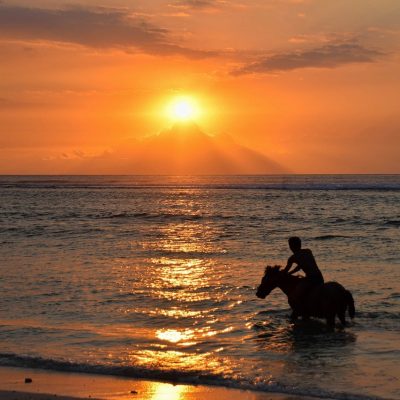Sparks of Beshalach
Horse and Rider into the Sea

For me, the first question of this week’s parsha is, “Why?!” We just finished the full cycle of the plagues. Last week’s parsha ends with Pharoah a broken man, leader of a decimated nation, begging the Jews to leave his country in the middle of the night. Now, just a few short days later, Pharoah decides it’s an excellent idea to go chase the Jews into the desert. He leads his people directly into the sea to be drowned. It’s an astounding testament to the resilience and the stubbornness of the human mind, but at the same time is absolutely mind-boggling. It leaves us asking, “Why?!”
Ramban remarks that of all the miracles, the greatest wonder was that Hashem hardened Pharoah’s heart to follow the Jewish nation into the desert and then straight into the sea (Shemot 14:4). As we know from the makot (see Ramban Shemot 7:3), hardening Pharoah’s heart meant giving Pharoah the strength to follow what he really wanted to do, despite the clear evidence of disastrous consequences. Here too, Hashem made room for the Egyptians to see what they wanted to see.
The Jews camped in the desert opposite the one Egyptian god that was not completely destroyed, the god Ba’al Tzefon (Rashi, Shemot 14:2). This was enough to convince the Egyptians that their real mistake, all along, was that they were not praying hard enough to the right avodah zarah. They were convinced that this time, with Ba’al Tzefon on their side, they would be victorious. And so they trapped the Jews between their army and the sea, and when a strong wind blew the waters of the sea to the side, they were convinced that the waters were splitting for them. They rode into the sea on their horses, into what they were sure was victory.
And Hashem made a mockery of them. The image of Hashem exalting over the Egyptians as they rode confidently into the sea is the essence of the song, the nevuah, that we sang at the sea. Az Yashir begins and ends with the image of the horse and rider being engulfed by the sea. This image is the only line we have of the song Miriam sang with the women. It is clearly the central image of the miracle at the sea, and key to understanding what this miracle was all about. We can understand this image in three levels of increasing depth.
The first level is the recognition that although we were freed from Egypt on the night of the slaying of the first-borne, we did not feel completely free. We were runaway slaves and Pharoah remained in power in Egypt. As was clearly evidenced, he remained a threat. The horse and rider together is an image of Egypt in its peak. It was only after we saw the Egyptians destroyed in the sea that we could felt fully free of him and his influence. It was only then that we could finally burst out into song of thanksgiving.
The image of the horse and rider drowned in the sea also conveys a deeper message about the destruction of evil. Both at the time of the redemption from Egypt, and also in the final redemption, evil is not destroyed. Evil self-destructs. At its core, it has no substance, and so the entire system leads only to destruction. The Egyptians, of their own volition, rode their horses into the sea and were destroyed.
Another, deeper, level of the revelation at the sea relates to the type of revelation that occurred there. As we discussed last week, the revelation in Mitzrayim was a revelation of the truth of Ma’aseh Bereisheit. The revelation at the sea was a revelation of a different system. The Mechilta (Parshat HsShirah 3) says that each maidservant by the sea saw more than Yechezkel ben Buzi saw. What Yechezkel saw was a vision of the Ma’aseh Mercavah, the Divine Chariot. The experience at the sea was also a revelation of Ma’aseh Mercavah.
This was great! I remember when I learned this Parsha last year in Chumash class. Have a wonderful Shabbos!
Thank you Yaffa!!